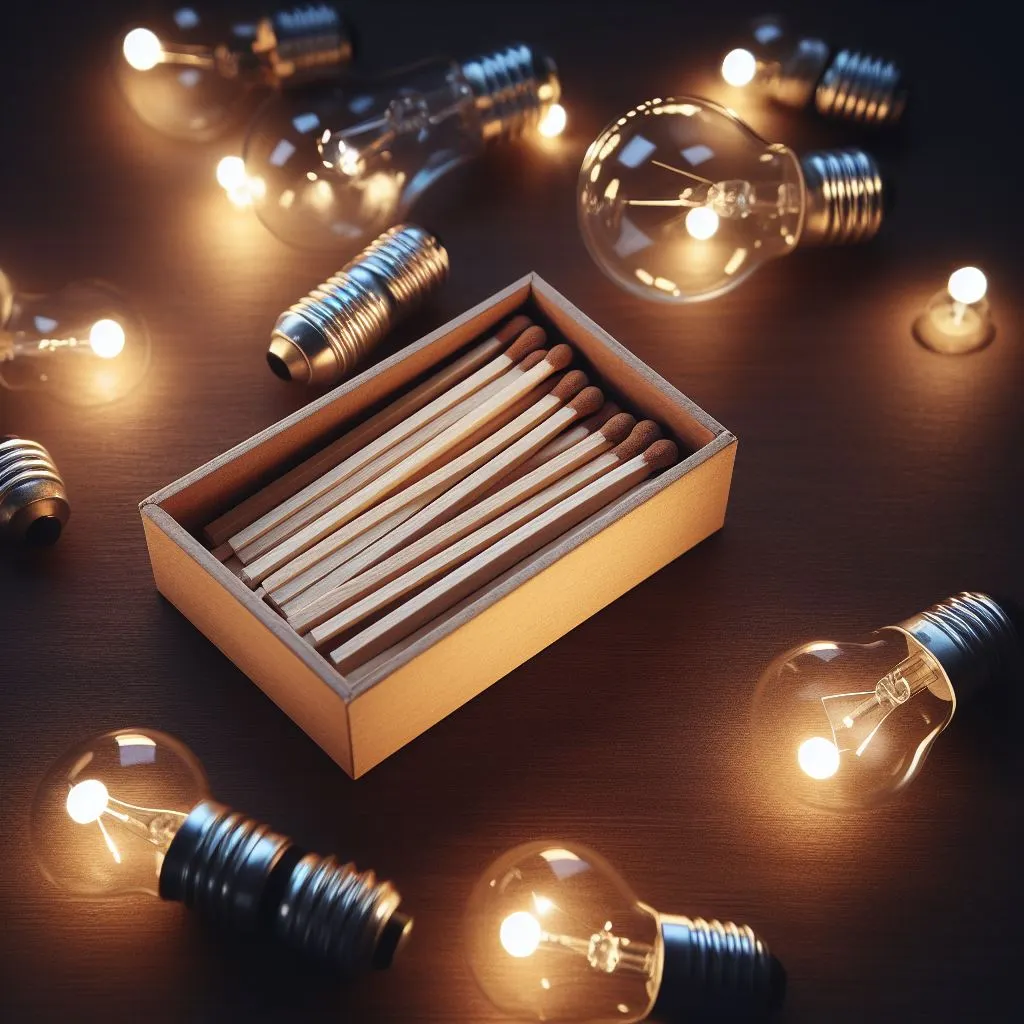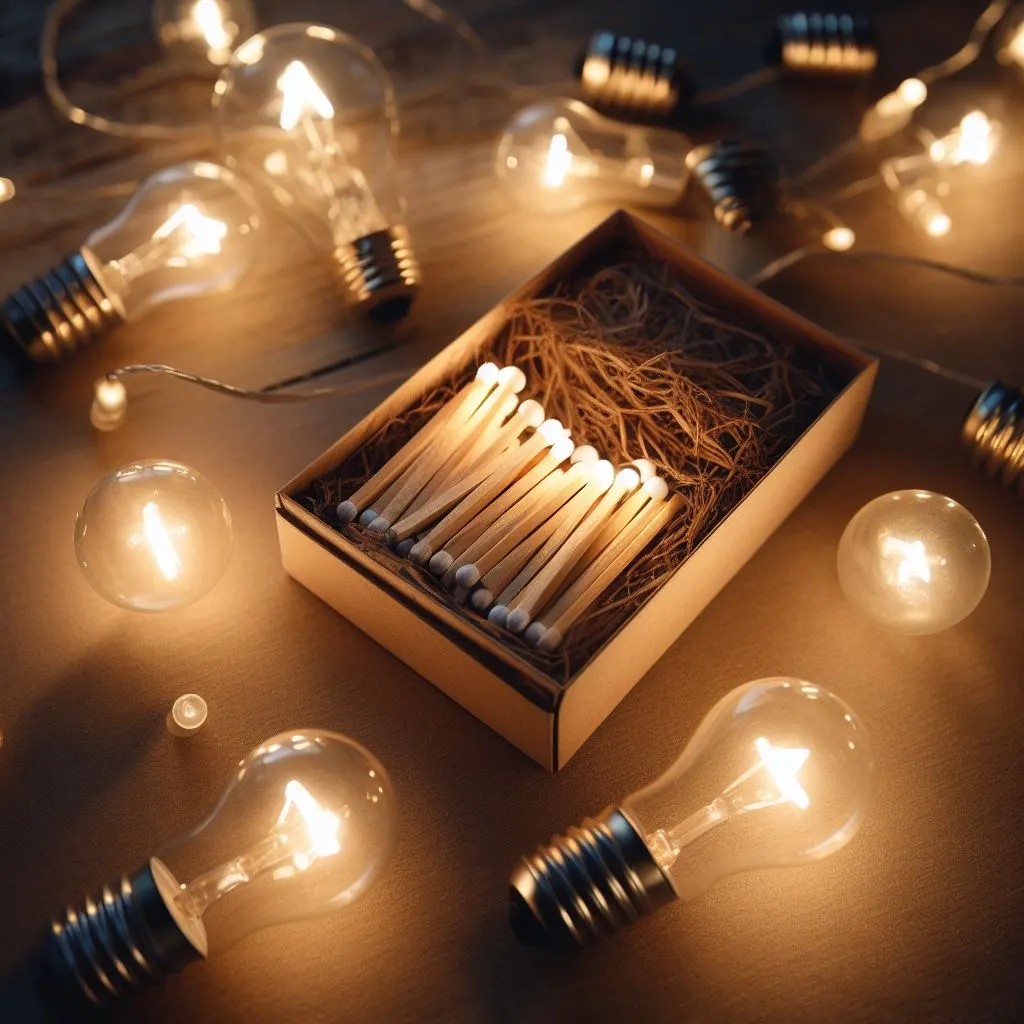Do LED Lights Get Hot Enough to Start a Fire?
Understanding the safety of LED lights, particularly when it comes to fire risk, is an integral part of ensuring their safe use.
LED lights, or light-emitting diode lights, have become increasingly popular in recent years due to their energy efficiency and long lifespan. But do LED lights get hot enough to start a fire?
In this guide, we will explore the physics behind the fire, the temperatures generated by LED lights, and what safety measures should be taken when using them.
We will look at any known cases of fires started by LED lighting and discuss regulations and advice for safe use. By the end of this guide, you will know whether LED lights can get hot enough to start a fire.
Historical Context of LED lights
LED lights, or light-emitting diodes, first gained mainstream attention in the 1960s. Since then, their use has skyrocketed, and they are now found in a wide range of settings, from car headlights to home lighting.
However, the journey from the laboratory of General Electric to the average home was a challenging one, as LED technology was initially expensive and had short lifespans.
It was in the 1990s that technological advances in materials and manufacturing paved the way for more widely available, long-lasting LEDs.
On top of their low energy consumption and long lifespan, LEDs also gained popularity due to their ability to produce bright lights with almost no heat output. Many of today’s advancements in LED lighting can be traced back to this period.
Today, LED lights are used across the world in both commercial and residential applications. They are known for their eco-friendly attributes, affordability, and long lifespan, making them the ideal lighting solution for many people.
However, their widespread use has raised an important question: do LED lights get hot enough to start a fire?
Physics Behind Fire
Fire is an essential element of our natural environment, but it can also be a destructive force when mishandled. It is essential to understand the science behind fire and how it starts. Heat, fuel and oxygen are the main elements needed for a fire to start and spread.
Heat is essential for fire to occur as it is required to raise the temperature of the fuel to its ignition level. Oxygen is then added to the heat, which helps the combustion of fuels and creates the flame.
The flame then releases heat to its surroundings, and more oxygen is added to the fire, creating a chain reaction that leads to a more significant fire.
It is also important to note that burning involves a chemical reaction that can occur at different temperatures. Different materials require different temperatures to start burning, but generally, the higher the temperature, the faster and easier it is to start a fire.
LED Lights and Temperature
LED lights are a great form of energy-efficient lighting, but have you ever wondered if they can get too hot and cause a fire? It’s an important question to ask since all electronics have the potential to become a fire hazard if improperly used.
So, let’s take a look at how LED lights generate heat and what temperatures they can reach.
Most LED light bulbs operate with very low wattage, often under 15 watts. Some modern LED bulbs use even lower wattage, often around 6 watts, making them much more efficient than their traditional incandescent counterparts.
But even though LED bulbs consume less power, they still produce heat. LED light bulbs convert around 95-98% of the power they consume into light, and the other 2-5% is converted into heat.
This means that even though the wattage of the bulbs is low, they can still generate a significant amount of heat.
Most manufacturers of LED light bulbs will list the temperature range that their bulbs are designed to operate within. Generally, these temperatures range between 25°C and 35°C (77°F to 95°F). These temperatures are significantly lower than the temperatures produced by traditional incandescent bulbs, which reach temperatures as high as 70°C (158°F).
Read Also: Glowing Reviews: 15 Best Light Bulbs For Exposed Fixtures
However, these temperatures are still higher than the ambient room temperature and can become a fire hazard if not properly monitored.
To ensure the safety of their products, LED light bulb manufacturers often conduct tests to determine the maximum temperature their bulbs can generate.
These tests assess the temperature of the components within the bulb, such as the driver and the LEDs themselves, as well as the temperature of the surrounding air. By doing so, they can determine if the bulbs are capable of generating enough heat to start a fire.
Testing To Determine Safety
When it comes to LED lights, safety is critical. We want to make sure that LED lights do not get so hot that they can cause a fire. To measure temperature and ensure the safety of LED lights, several tests have been conducted.
These tests include the Lumen Maintenance Test and the Thermal Shock Test. The Lumen Maintenance Test checks the durability of LED bulbs over time and measures the amount of light output given off by each bulb to assess how long they will last.
This test helps determine if an LED bulb is safe to use for an extended period.
The Thermal Shock Test measures the temperature generated by the LED light and assesses the risk of heat-related fires.
Such tests can involve placing an LED bulb in an enclosed chamber and measuring the temperature rise over time to determine the highest temperature an LED bulb can reach without causing a fire.
Additionally, various safety calculations can be done using the data collected from such tests. Calculations such as wattage and power can be used to determine the amount of energy needed to start a fire and the maximum temperature an LED bulb can reach without causing a fire.
Read Also: Do LED Bulbs Leave an Unappealing Odor?
Potential Fire Risk
It is widely accepted that LED lights are much safer than traditional lighting. However, it is still essential to be aware of the potential fire risks associated with LED bulbs to ensure that they are used correctly and safely.
One of the questions often asked is: do LED lights get hot enough to start a fire? The answer is complicated. LEDs themselves do not generate enough heat to start a fire, but the systems which hold them in place and the materials around them may be vulnerable to extreme temperatures.
To determine the risk posed by LED lights, it is necessary to examine their temperature tolerance and the testing methods used to assess this.
This is because extreme temperatures can cause electrical components to malfunction or wear out quickly, which can lead to a fire hazard.
Examples of Fires Caused by LED Lighting
In recent years, there have been several reports of fires that LED lights have started. In 2018, for example, a fire in a U.K. restaurant was attributed to an LED light that became overheated.
In other cases, LED lamps have been identified as the source of fire in industrial buildings and even in residential settings.
Many of these fires can be traced back to the use of unsafe wiring or electrical fixtures or when the lights have been used beyond their rated lifespan. In some cases, the bulbs themselves were faulty in their construction.
It is important to note, however, that the majority of LED lighting-related fires have been preventable. Proper installation, maintenance, and use of LED lighting can significantly reduce the risk of fire.
Read Also: Busting the Myth: Can LED Bulbs Explode?
Safety Regulations and Advice for Using LED Lights
LED lights have become common in many households due to their energy efficiency and the attractive designs they offer.
But, since they are relatively new products, some regulations should be followed to ensure safety. It is essential to be aware of these regulations and follow the advice provided to ensure the safe use of LED lights.
Regulations
The safety of LED lights is regulated by government-approved bodies such as the International Electrotechnical Commission (IEC). The IEC has set out strict standards and guidelines relating to LED lights and their safety, including a set maximum temperature for the bulbs.
This means that manufacturers must adhere to these standards when manufacturing their products, and consumers should check for certification marks before making a purchase.
Advice for Use
In addition to following the regulations set out by the IEC, there are certain precautions which can be taken to minimize the chances of an LED light causing a fire.
These include ensuring the LED light is installed correctly, maintaining it following the manufacturer’s instructions, and not overloading electrical circuits with too many LED lights.
- Always ensure LED lights are installed by qualified personnel.
- Do not exceed the wattage rating for the LED product.
- Make sure not to overload an electrical circuit with too many LED lights.
- Check for any signs of damage, such as cracked lenses or worn wiring, and only use LED lights if they are still in good condition.
- Ensure the power supply is of sufficient capacity and does not exceed the recommended voltage range.
- Be mindful of how hot the LED lights become when in operation, and keep anything combustible away from them.
- Please read the manufacturer’s instructions and follow their advice regarding maintenance and cleaning.
By following the regulations and advice outlined above, you can help reduce the risks associated with LED lighting. However, if you do experience any problems with an LED light or suspect a fire, contact your local fire service immediately.
Conclusion
When assessing the safety of LED lights, it is essential to understand the science behind fire. LED bulbs can generate heat, but the temperatures are usually not high enough to cause a fire.
Testing is necessary to ensure that LED lights are compliant with safety regulations. In addition to testing, other steps can be taken to reduce the risk of fire. It is also essential to remain aware of any reported cases of fires connected to LED lighting.
In conclusion, LED lights are generally safe to use and do not get hot enough to start a fire. However, it is always important to be aware of the potential for any fire hazard and take appropriate steps for prevention.
Resources
When researching LED lighting safety, it is essential to use verified sources that are up-to-date with the latest regulations and research. The following is a list of reputable sources that provide further information about the safety of LED lights:
- U.S. Department of Energy – LED Lighting
- Lighting Europe – LED Safety Guide
- Energy Star – Learn About LED Bulbs
- UL LLC – Light Safety Tips for Consumers
- ENERGY.GOV – LED Lighting Safety Considerations
It is also recommended to consult with local electrical contractors or fire protection engineers when considering LED lighting for your home or business.
The information contained in this article is for informational purposes only and should not be taken as legal or professional advice.
It is always important to consider the safety of LED lights, and readers should consult with an expert before making any decisions or taking any action based on the content of this guide.
LED bulbs are growing in popularity around the world due to their energy efficiency and long-lasting nature. However, as with all electrical appliances, it is essential to use LED lighting safely.
As with all electricity-powered devices, LED lights can get hot, and if not properly monitored, there is a risk of starting a fire. This is why it is essential to understand the temperatures LED lights can generate and be aware of the regulations that help keep us safe.
It is also essential to recognize that LED lighting can be used safely and efficiently, just as with any other electrical device. Taking the time to do research and understand the potential risks is incredibly important for protecting people and property.
FAQs about LED Lights and Fire Risks
How did LED lights develop over time?
LED lights were first discovered in the early 1920s, but their use as a lighting source only existed in the 1960s. By the 1990s, they had become more popular as a primary lighting source due to their energy efficiency and long life expectancy.
What is the science behind fire?
Fire requires three components: oxygen, heat, and fuel. All three must be present for a fire to occur. Heat increases the rate at which an object’s molecules move, raising its temperature. Heat will reach the point of ignition when fuel is present, causing it to combust.
What is the relationship between LED lights and temperature?
LED lights generate heat as a byproduct when they produce light. The amount of heat generated typically depends on the power, size, and design of the LED. Most commercial LED fixtures are designed to produce only minimal amounts of heat.
How have tests been conducted to measure LED heat production and assess the risk of fire?
Tests have been conducted using thermistors, temperature probes, radiation sensors, and thermal imaging cameras. These tools are used to measure the temperature of LED lights in various scenarios, such as direct sunlight, controlled environments, and during extended periods.
Do LED lights get hot enough to be a potential fire hazard?
Generally, LED lights do not get hot enough to start a fire. However, if they are placed too close to flammable material or used without proper ventilation, then they can become a potential fire hazard.
Does LED lighting cause any known cases of fires?
Yes, there have been some reported cases where LED lights have been identified as the cause of a fire. This underscores the importance of taking safety precautions when using LED lighting and adhering to local regulations.
What safety regulations and advice should I be aware of when using LED lights?
It is essential to follow all safety regulations and instructions provided by the manufacturer when using LED lighting. Additionally, make sure that it is placed away from any flammable material and ensure that it is well-ventilated.





1 thought on “Can LED Lights Get Hot Enough to Cause a Fire?”